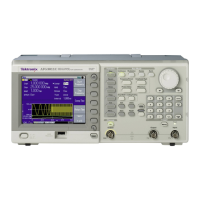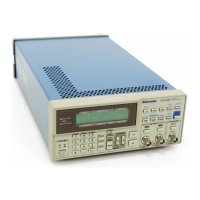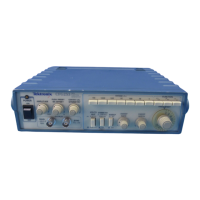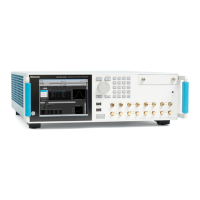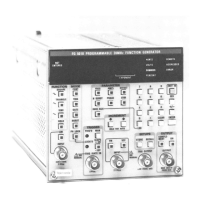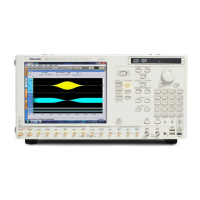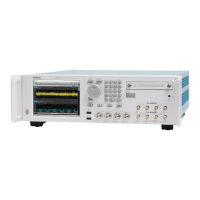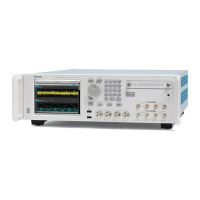GPS7 GPS Synchronization and Timecode modu le
In a simple syst
em without the optional booster, Cable 1 connects the antenna
to the GPS7. The length of this cable is limited by its attenuation at the carrier
frequency (i.e. 1575 MHz for GPS). The GPS7 should have a signal that is 18 dB
or greater above the ambient level. For example, for a 35 dB antenna, the allowed
cable loss is 35 – 18 = 17 dB. (See Figure 3 -53.)
Cables. Att
enuation varies significantly depending on cable type. Cable loss is
about 13 dB/100 ft for a miniature coaxial cable like the Belden 1855, while for a
RG11 style like the Belden 7731, the loss is only 5.5 dB/100 ft. This correlates to
an allowable length of 130 ft for the small cable, to over 300 ft for the larger cable.
A booster amplifier can be adde d if more length is needed, as shown in the
optional block in the signal path system. (See Figure 3-53.)
If a 20 dB amplifier is added, then 20 dB more cable loss can be accommodated.
This equates to another 150 ft of small coax, or 360 ft of large coax.
Although the GPS7 input and most of the other components are 50 Ω, either
50 Ω or 75 Ω cables can be used in most installations. The reflections from the
impedance mismatch will not cause significant changes in the system because the
signal is narrow band and the cable loss is usually many dBs. However, you
shoul
d not mix short cable lengths of different impedances, as this might c reate
reflections with the p otential to cause s i gnal degradation.
Amplification. The GPS7 provides either 3.3 V or 5 V DC power to drive the
amplified antenna and booster a mplifier. The power is carried on the same coax as
the GPS/GLONASS signal, and can be turned off if the antenna is powered by a
sep
arate supply. When you are designing the antenna system, check the voltage
and current requirements of the components to insure compatibility.
Th
e location of the booster amplifier is important. It needs to be before the
second length of cable shown in the simplified antenna system diagra m. If the
booster amplifier is placed just before the GPS7, then the signal will have been
attenuated too far and the output may be noisy. If you cannot put the optional
booster amplifier in the middle of a long run of cable, then put it near the antenna
rather than near the GPS7 end.
For more complex systems, a variety of booster amplifiers, powered and passive
splitters, D C blocks, and filters are available from a number of vendors.
Antenna location. It is important that the GPS/GLONASS antenna location h as
a clear view of a large part of the sky. Since GPS and GLONASS satellites are
constantly orbiting the earth, they may be in any direction at a given time. If part
of the sky is blocked by buildings, trees, mountains, etc., then fewer satellites will
be visible. It is also possible to get reflected signals that will have come by a
longer path than expected and thus may degrade timing accuracy and stability.
When evaluating a site, it is important to monitor it over several days and with a
variety of weather conditions present.
3–104 TG8000 Multiformat Test Signal Generator User Manual
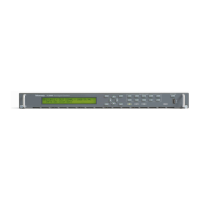
